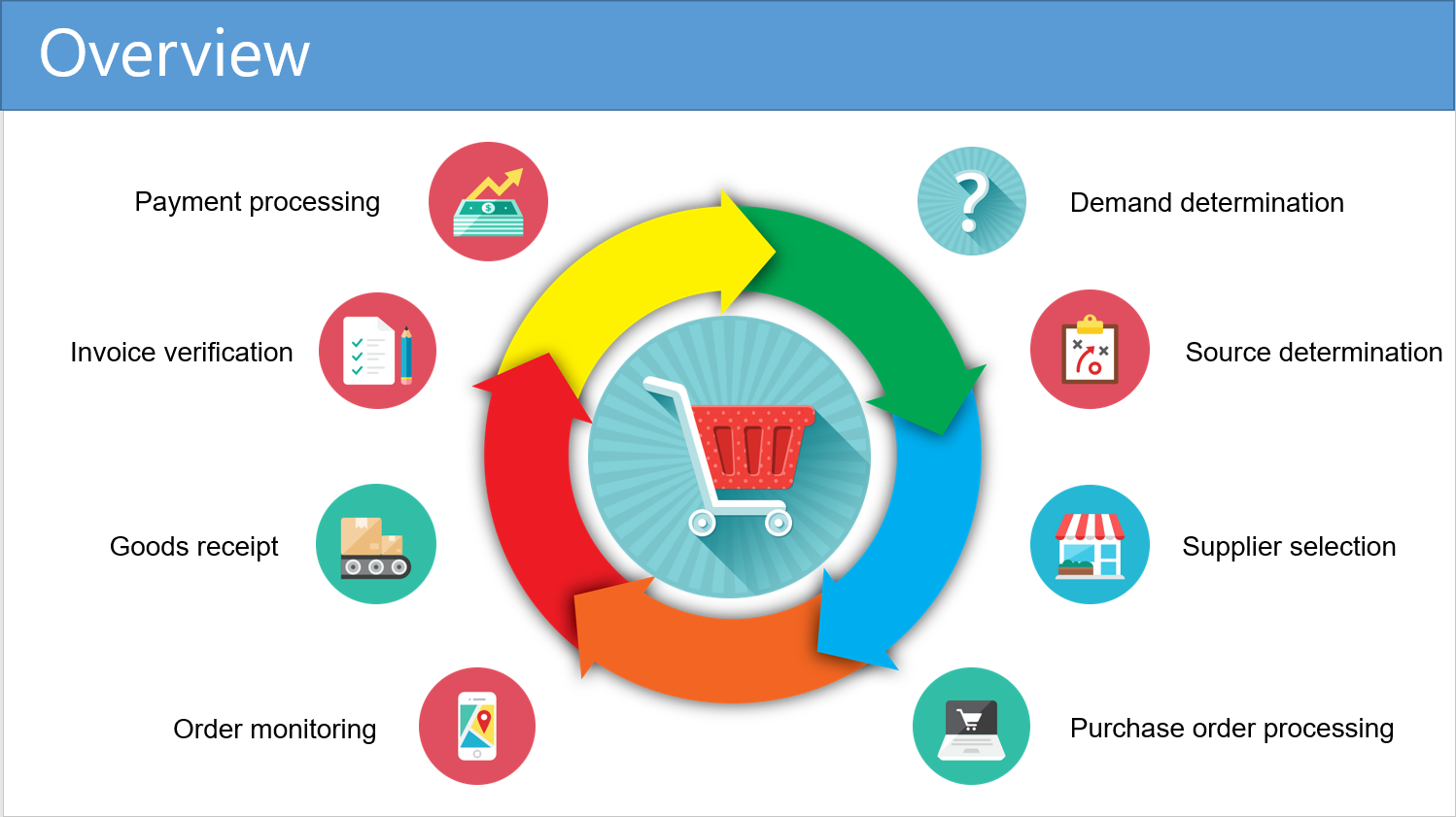What is procurement lifecycle management for operational purchasing?
Operational procurement lifecycle management
The operational procurement lifecycle management process enables a company to make purchases that will be valuable for the office, production or sale departments.
SAP sales and distribution online training
The larger the business, the more it will benefit by applying best purchasing practices. In any case, even the smallest companies will use these procedures, including applying the prescribed procedures first and, in the long run, distributed systems such as SAP Ariba.
This is because different workplaces may require exactly the same office supplies and two single factories, even in different countries, may require exactly the same raw material for their production processes.
SAP production planning – capacity planning training
The strategic sourcing process – Purchasing and Procurement Center

Definition of operational procurement
Operational procurement is the means by which a company buys the goods and services it needs to carry out its day-to-day activities (for example, it may buy them from external suppliers, but also other subsidiaries).
Operational Procurement/Purchasing | ThunderQuote Blog
Life cycle management of operational purchases
In all of these cases, applying SAP Business procurement lifecycle management best practices within the purchasing department will save the business money in a number of ways:
– financial, as some larger contracts that may be negotiated with suppliers for goods or services used in different sites,
– time-sensitive, as the procurement lifecycle management process will not need to be restarted from scratch, and the history is accessible and shared across the organization,
– human, as SAP best practices will streamline the lifecycle management flow of the entire procurement lifecycle management process,
– Report, with the ability to retrieve, share, and report on many key performance indicators related to the entire procurement lifecycle management process for internal purchasing organizations.
SAP Operational procurement training
Determination of the demand
The operational procurement lifecycle management process begins with the determination of demand. What is needed, which services or materials are necessary for myself or my colleagues to perform our work, such as producing the right quantity to fulfill a sales order.
When the needs have been detailed, it is time to determine the sources. Who is eventually able to deliver these products to the places where they will be used.
Determining demand in the procurement lifecycle management process of operational purchasing involves creating the requisition, a document in SAP that centralizes all item requisitions within the enterprise.
The transaction for creating purchase requisitions in SAP Purchasing is ME51N.
SAP purchasing trainings
Determinants of demand – Market

Choice of the supplier
Next, select the supplier of these sources that will best suit the current purchase in terms of time, quantity, and quality.
In SAP, we will start by creating requests for quotation (also known as RFQs) in transaction ME47. A request for quotation is used to ask suppliers to provide their conditions for a specific order.
A quote request will be sent to all identified potential suppliers, promptly asking them to let the company know if and how it will be able to provide the goods or services requested.
Choosing a SAP Vendor? 20 questions to ask – APPSeCONNECT

Suppliers who can respond to this request will respond with a quote, listing their exact terms and conditions for the delivery of that order. These responses are the first binding documents in the procurement lifecycle management process for operational purchases. If the offer is accepted and the conditions are not met, this would constitute a breach of contract and could lead to legal action.
These responses, the offers, will be recorded in transaction ME48, possibly with reference to an existing RFQ, and are part of the SAP offer process.
SAP quotation training
SAP Request for Quotation (RFQ) Tutorial – Free SAP MM Training

The offers received will be compared by the purchasing department and the best offer will be selected: the cheapest, with the best quality, which promises to fill the order on time.
This process is called price comparison and is executed in transaction ME49. SAP helps to easily compare these offers with each other and make a smart purchase decision based on the facts, displaying them to find the best supplier for the requested delivery.
How to Compare Price for Different Quotation: SAP ME49

Order monitoring
Once the supplier is identified, it is time to process the purchase orders, ie to create the binding order documents to be sent to the suppliers, asking them to deliver certain goods or services according to the agreed conditions.
An order is sent to a supplier by the purchasing department via the creation of a purchase order (also called a PO), a legally binding document, in transaction ME22N.
How to Create Purchase Order (PO) for Stock Material in SAP

While awaiting the delivery of the orders, these are supervised. Will stocks be available on time, can previous production steps be started, should the following steps be completed in time?
When the goods are received, they are recorded and verified against the corresponding orders, to ensure that they have been correctly executed. The goods receipt process will be managed by the warehouse team.
At this point, surprises can be detected: broken products, missing goods, wrong formats, poor quality, etc. Any of these issues may result in the creation of additional documents, which may trigger a return, negotiate a credit with the provider, or trigger a lawsuit in extreme cases.
Billing process
The invoice can then be checked and possibly revised in case of delivery problem and possible returns.
The payment can be processed later to close this series of orders; invoice is the final document in the procurement lifecycle management process.
Supplier invoice management is the last step in the SAP operational procurement lifecycle management process. It is usually managed by a specific team, closer to the accounting department, who will manage the monetary payment to the supplier.
Vendor invoice management training
Once the invoice is settled, the purchase process is completed, which allows the production of finished products and the launching of custom manufacturing processes, or resale.
Operational Procurement Lifecycly Management training
With an online course, you can understand the entire operational procurement lifecycle management process in SAP from a purchasing perspective and its use in purchasing processes by following our online course on operational procurement lifecycle management in SAP.
Procurement training
The following topics are covered in this course:
– Requisition in self-service and creation of a purchase request,
– Processing requirements via request for quote, quote and price comparison,
– order processing, purchase of services and creation of orders,
– Collaboration of purchase orders and integration with the Ariba network,
– Procurement Analytics and the corresponding FIORI applications.
What are your SAP lifecycle management needs? Let us know in the comments which articles would be useful.
SAP Purchasing requisition creation
SAP quotation training
Create purchase order in SAP with ME21N
Procurement training



